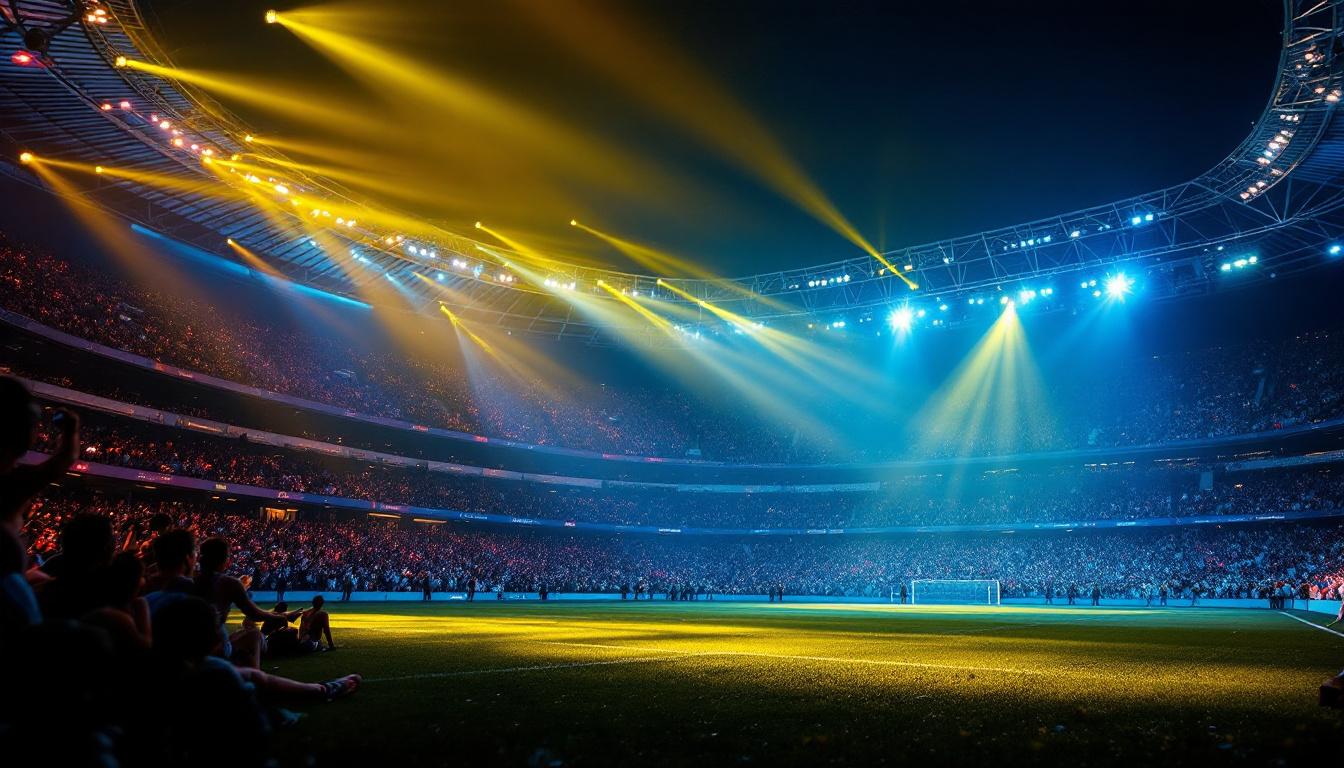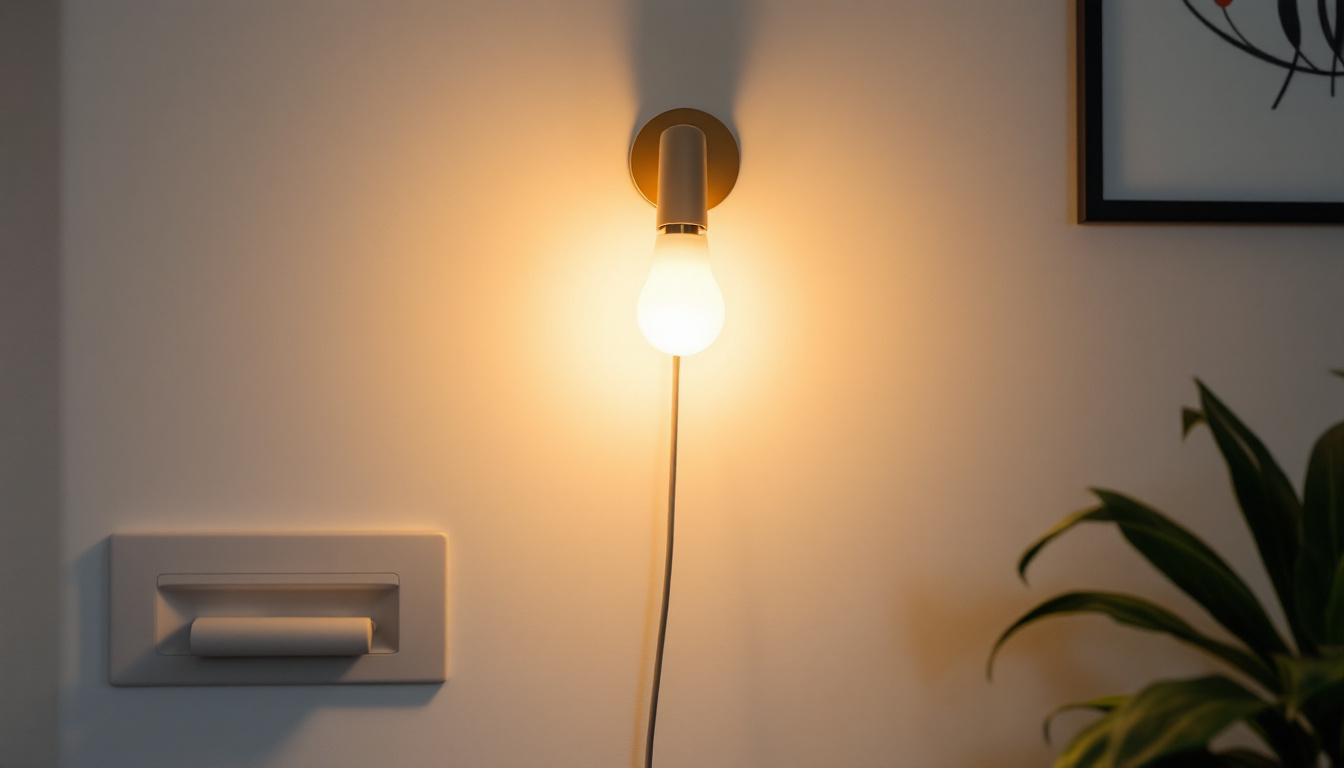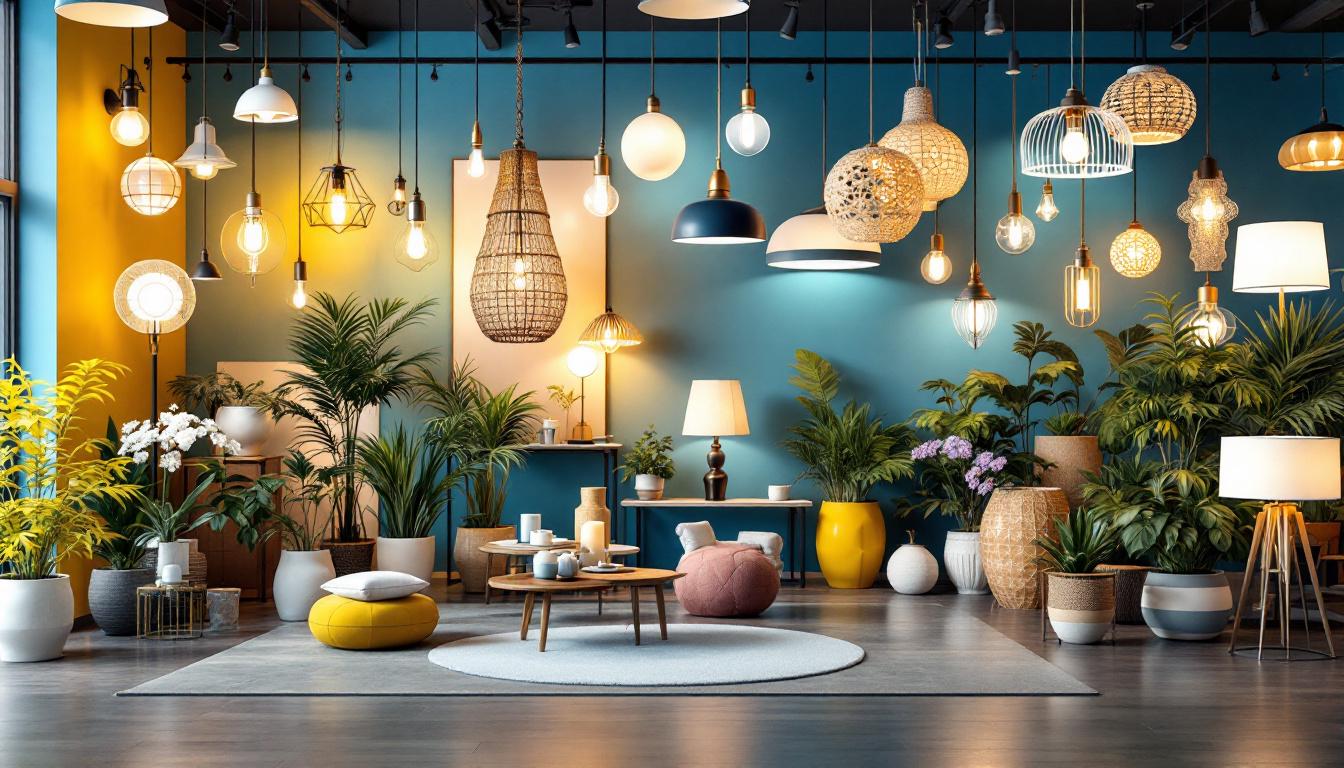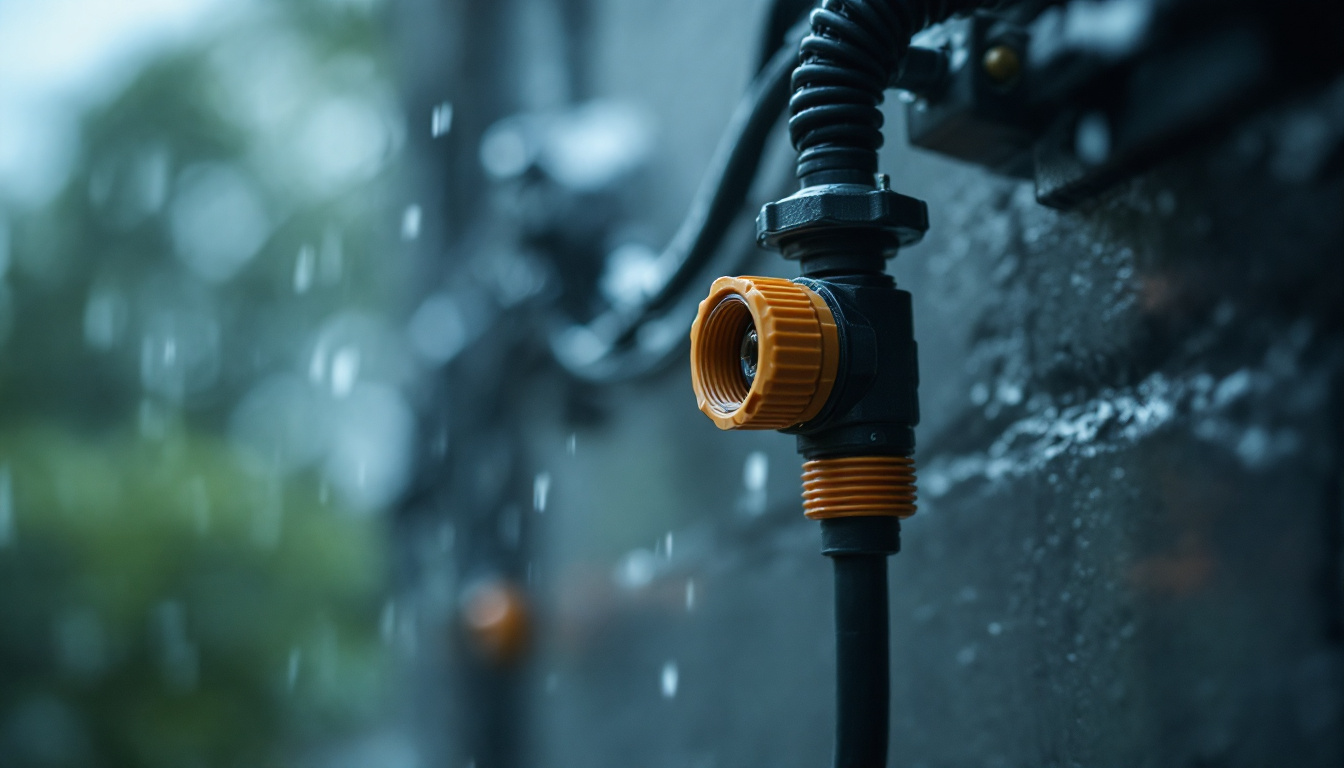
Sports lighting has undergone a remarkable transformation over recent decades, evolving from simple floodlights to sophisticated, energy-efficient systems that enhance both athlete performance and spectator experience. For lighting contractors, understanding the latest trends and technologies in sports lighting is crucial to delivering cutting-edge solutions that meet the demands of modern venues.
The future of sports lighting design and installation is shaped by innovations in LED technology, smart controls, and sustainability initiatives. These advancements not only improve visibility and safety but also reduce operational costs and environmental impact. This article explores the key developments shaping the future of sports lighting and offers insights for contractors aiming to stay ahead in a competitive market.
One of the most significant advancements in sports lighting is the integration of smart technology, which allows for real-time adjustments based on various factors such as weather conditions and the specific needs of the event. For instance, lighting systems can now be programmed to automatically dim or brighten depending on the time of day or the intensity of the game, ensuring optimal visibility without wasting energy. Additionally, these smart systems can be controlled remotely, providing venue managers with unprecedented flexibility and control over their lighting environments.
Moreover, the push for sustainability in sports lighting is not just about energy efficiency; it also encompasses the use of eco-friendly materials and practices during installation and maintenance. Many contractors are now opting for fixtures that are made from recyclable materials and are designed for longevity, which minimizes waste and reduces the overall carbon footprint of sports facilities. This commitment to sustainability resonates with fans and athletes alike, who are increasingly aware of the environmental impact of their favorite sports venues. As such, lighting contractors who prioritize these eco-conscious practices will not only enhance their marketability but also contribute to a greener future for sports entertainment.
Traditional sports lighting systems relied heavily on metal halide and high-pressure sodium lamps, which, while effective, had significant drawbacks including high energy consumption, long warm-up times, and frequent maintenance needs. The introduction of LED lighting has revolutionized the industry by addressing these issues comprehensively.
LEDs offer superior energy efficiency, consuming up to 70% less power than conventional lighting while delivering brighter, more uniform illumination. This efficiency translates into substantial cost savings for facility operators and a reduced carbon footprint, aligning with growing environmental regulations and sustainability goals. Moreover, the longevity of LED fixtures—often lasting over 50,000 hours—means that replacements are infrequent, further reducing waste and maintenance costs associated with traditional lighting systems.
One of the most compelling advantages of LED sports lighting is its ability to provide high-quality light with excellent color rendering and minimal flicker. This improves visibility for athletes, referees, and spectators alike, enhancing the overall experience. Additionally, LEDs can be precisely controlled to adjust brightness and beam direction, minimizing light spill and glare. The ability to tailor lighting conditions for specific sports or events not only enhances performance but also contributes to a more enjoyable atmosphere for fans.
Dynamic lighting controls enable instant on/off capabilities and dimming features, which are essential for multi-use venues hosting different sports or events. These systems also facilitate integration with broadcast requirements, ensuring optimal lighting for high-definition television and streaming services. Furthermore, advanced LED systems can incorporate smart technology, allowing for automated adjustments based on environmental conditions such as daylight levels or weather changes. This adaptability not only enhances the functionality of sports venues but also promotes energy conservation, as lights can be adjusted in real time to suit varying needs, leading to even greater operational efficiency.
The integration of Internet of Things (IoT) technology into sports lighting systems is a game-changer for lighting contractors. Smart lighting solutions allow for real-time monitoring, remote control, and automated scheduling, significantly improving operational efficiency.
For example, sensors can detect ambient light levels and adjust artificial lighting accordingly, ensuring consistent illumination while conserving energy. Additionally, predictive maintenance enabled by IoT analytics helps identify potential failures before they occur, reducing downtime and maintenance costs. This proactive approach not only saves money but also enhances safety by minimizing the risk of equipment failure during critical events, ensuring that athletes and spectators alike can enjoy a seamless experience.
Furthermore, the data collected from these smart systems can be invaluable for optimizing performance. By analyzing patterns in lighting usage and energy consumption, facility managers can make informed decisions about usage trends, leading to further enhancements in efficiency and sustainability. This data-driven approach can also support efforts to achieve green building certifications, appealing to environmentally conscious stakeholders.
Smart lighting systems also provide unprecedented customization options. Lighting scenes can be programmed to suit different sports, events, or moods, enhancing the versatility of sports venues. For instance, lighting can be dimmed during breaks or heightened during key moments to amplify excitement.
Moreover, integration with mobile apps and centralized control platforms empowers facility managers with intuitive tools to manage lighting effortlessly. This level of control not only improves functionality but also creates opportunities for innovative fan engagement strategies. Imagine a scenario where fans can influence the lighting during a game through a mobile app, creating an interactive experience that deepens their connection to the event. Such features can transform a standard game into a memorable spectacle, fostering a sense of community and participation among attendees.
Additionally, the ability to synchronize lighting with audio and visual elements can elevate the overall atmosphere of sporting events. For example, coordinated light shows during player introductions or halftime performances can captivate audiences, enhancing the entertainment value of the event. This synergy between lighting, sound, and visuals not only enriches the spectator experience but also positions venues as cutting-edge destinations for entertainment, attracting larger crowds and boosting revenue opportunities.
As environmental concerns become increasingly prominent, sports venues are under pressure to adopt sustainable lighting solutions. LED technology inherently supports energy conservation, but the future of sports lighting goes beyond efficiency to encompass holistic environmental responsibility.
Lighting contractors are now expected to design systems that comply with stringent energy codes and certifications such as LEED and WELL Building Standards. Incorporating renewable energy sources, such as solar power, into lighting infrastructure is also gaining traction, further reducing carbon emissions and operational costs.
Light pollution is a growing issue, especially for outdoor sports facilities located near residential areas or natural habitats. Advanced optical designs and shielding techniques help direct light precisely where it is needed, reducing skyglow and glare.
Contractors must be knowledgeable about local regulations and best practices to ensure their installations minimize environmental impact while maintaining optimal performance. This commitment to responsible lighting design enhances community relations and supports broader ecological goals.
Each sport and venue presents unique lighting requirements. For example, baseball stadiums demand uniform illumination across the diamond, while tennis courts require high vertical illuminance to track fast-moving balls. Indoor arenas have different challenges, including ceiling height and reflective surfaces.
Lighting contractors must collaborate closely with architects, engineers, and venue operators to develop customized solutions that meet specific standards set by governing bodies such as the International Tennis Federation (ITF) or the National Football League (NFL).
Modern sports lighting design goes beyond technical specifications to consider aesthetics and fan experience. Architectural integration of lighting fixtures can enhance the visual appeal of a venue, creating iconic nighttime imagery that attracts visitors and media attention.
Additionally, color-changing LED systems enable dynamic light shows and branding opportunities, adding a new dimension to sports events. Contractors skilled in both engineering and design principles are well-positioned to deliver these sophisticated installations.
Installing sports lighting systems involves complex electrical and structural work, often at significant heights and in challenging environments. Safety protocols must be rigorously followed to protect workers and ensure compliance with industry standards.
Proper grounding, surge protection, and waterproofing are critical to system longevity and reliability. Contractors should also be familiar with local building codes and lighting ordinances to avoid costly delays or modifications.
Successful sports lighting projects require thorough commissioning to verify that all components perform as intended. This process includes photometric testing, control system calibration, and integration with venue management systems.
Long-term maintenance planning is equally important. LED systems, while low-maintenance, still require periodic cleaning and inspection. Implementing predictive maintenance programs using smart sensors can extend system lifespan and optimize performance.
Lighting contractors must continuously update their skills and knowledge to keep pace with rapid technological changes. This includes training in digital control systems, IoT integration, and sustainable design principles.
Partnering with manufacturers and technology providers can provide access to the latest products and support services, enhancing project outcomes and client satisfaction.
Modern sports lighting projects demand a consultative approach, where contractors act as trusted advisors rather than mere installers. Understanding client goals, budget constraints, and operational needs enables the development of tailored solutions that deliver maximum value.
Effective communication and project management skills are essential to navigate the complexities of multi-stakeholder environments and ensure timely, successful project delivery.
The future of sports lighting design and installation is bright, driven by innovations in LED technology, smart systems, and sustainable practices. For lighting contractors, embracing these trends is not only a pathway to business growth but also a contribution to safer, more enjoyable, and environmentally responsible sports venues.
By investing in education, adopting new technologies, and fostering collaborative relationships, contractors can position themselves at the forefront of this dynamic industry. The evolving landscape offers exciting opportunities to redefine how sports are illuminated, enhancing every game, event, and fan experience for years to come.
Ready to lead the charge in the future of sports lighting design and installation? At LumenWholesale, we provide lighting contractors with the high-quality, spec-grade lighting products you need to stay ahead of the curve. With our competitive wholesale prices and commitment to cutting out the middleman, you’re guaranteed to get the best value for your investment. Our extensive selection not only meets but exceeds industry standards, ensuring that every lighting project shines with reliability and performance. Plus, with the convenience of free shipping on bulk orders, you can trust that you’re getting premium lighting solutions without any hidden fees. Elevate your lighting game and give your clients the exceptional experience they deserve. Discover the perfect blend of quality, affordability, and convenience at LumenWholesale – Wholesale Lighting at the Best Value.

Discover expert tips from a seasoned lighting contractor on selecting and installing plug-in light fixtures for walls.

Discover how Discount Lighting Outlet can transform your lighting projects with affordable, high-quality solutions.

Discover the essential guide to light bulb socket types tailored for lighting contractors.

Discover the pitfalls lighting contractors often encounter with waterproof wire connectors.